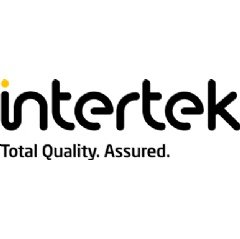Wednesday, 26 November 2025
How Saveggy’s Minimalist Coating Could Transform Europe’s Produce Supply Chain
Arash Fayyazi, Chief Technology Officer, Saveggy As the EU prepares to enforce its ban on single-use plastics for fresh produce, the food industry faces mounting pressure to find sustainable alternatives…

Arash Fayyazi, Chief Technology Officer, Saveggy
As the EU prepares to enforce its ban on single-use plastics for fresh produce, the food industry faces mounting pressure to find sustainable alternatives that don’t compromise shelf life or quality. Swedish startup Saveggy has emerged as a frontrunner with its plant-based, edible coating, a minimalist innovation that mimics nature’s own protective layer on fruits and vegetables.
Co-founded by Arash Fayyazi, who also serves as the company’s Chief Technology Officer, Saveggy is now moving from research to real-world application through pilot collaborations with major retailers like ICA and Odlarna.se. With just two food-grade ingredients and no additives, Saveggy’s coating promises to extend freshness and reduce plastic waste, offering a practical path toward truly sustainable produce packaging.
In this exclusive interview with NUFFOODS Spectrum, Arash Fayyazi discusses the science behind Saveggy’s breakthrough, its journey from lab to commercial scale, and how the company plans to reshape the global produce supply chain with innovation rooted in simplicity and sustainability.
Saveggy’s plant-based coating is being described as a game-changer for plastic-free produce packaging. Could you walk us through how the technology works and what makes it different from other edible coating solutions on the market?
The technology mimics how fruits and vegetables protect themselves from going bad in nature. We have a minimalistic approach which is unique: there are only two ingredients in our product, both being classified as food and no additives. All our competitors use multiple components including additives, polysaccharides, emulsifiers, preservatives, etc.
The pilot with ICA and Odlarna.se marks Saveggy’s transition from R&D to commercial scale. What are the key learnings you hope to gather from this test phase, and how will it inform broader rollout plans across Europe?
Exactly, this is when we go from small-scale to large-scale. Here there are three important insights we look for:
Performance in commercial conditions – how well our coating protects the produce during transport, storage, handling and quantifying freshness and food waste reduction
Consumer response – understand how shoppers perceive coated, plastic-free produce
Operational integration – how easily the technology fits into existing workflows at grower and retail facilities, including application speed, handling, and quality control
The EU’s upcoming ban on single-use plastics for fresh produce will reshape the packaging landscape. How is Saveggy positioning itself to support retailers and producers in adapting to this shift?
The EU’s ban on single-use plastics for fresh produce leaves retailers and producers with almost no alternatives that prevent food waste. Saveggy fills that gap with a plant-based, edible protection that preserves freshness and shelf life just like plastic — but without the plastic. We’re helping partners transition smoothly to plastic-free produce while protecting both quality and sustainability.
Beyond cucumbers, what other types of fresh produce are you targeting next for this plant-based protection, and what technical or logistical challenges do you foresee in scaling it to different categories?
We’re starting with cucumbers because they’re one of the biggest plastic users, but our technology isn’t limited to that. The next categories we’re targeting include zucchini, eggplants, bell peppers and more, where similar protection is needed. Each produce comes with its own technical challenges, from different surface textures and respiration rates to how our protection interacts with the produce surface. Another challenge is that scaling also means adapting application methods for different shapes and supply-chain conditions.
Saveggy’s mission addresses both plastic reduction and food waste. Could you share any data or early evidence on how your coating extends shelf life or reduces spoilage during distribution?
We’ve built a strong data foundation over five years of research involving tens of thousands of cucumbers. In our tests, we’ve measured key freshness indicators such as moisture loss, texture, crunchiness, color, and visual appearance using both sensory evaluation and precise lab instruments. The results consistently show that our technology can extend shelf life up to three times longer compared to unprotected cucumbers and is on par with plastic films.
With support from EIT Food and collaborations with Aarhus and Lund universities, Saveggy has a strong innovation network. How important are these partnerships in accelerating your path to commercialisation and global impact?
We’ve been fortunate to collaborate closely with both Lund and Aarhus universities, as well as receive support from EIT Food. These partnerships have been instrumental in accelerating our R&D, helping us validate our science, optimise our formulation, and shorten the time from lab to market.
Shraddha Warde
shraddha.warde@mmactiv.com
Technology
Tetra Pak Unveils AI-Ready Smart Factory Suite at Gulfood Manufacturing
Nov 26, 2025 | Packaging
Tanmiah launches region's first geothermal-cooled poultry facility
Nov 25, 2025 | Company News
Food Testing
More Popular
Tetra Pak Unveils AI-Ready Smart Factory Suite at Gulfood Manufacturing
Nov 26, 2025 | Packaging
Sewa International partners with DFW Hindu temple to launch mobile pantry
Nov 25, 2025 | Company News






